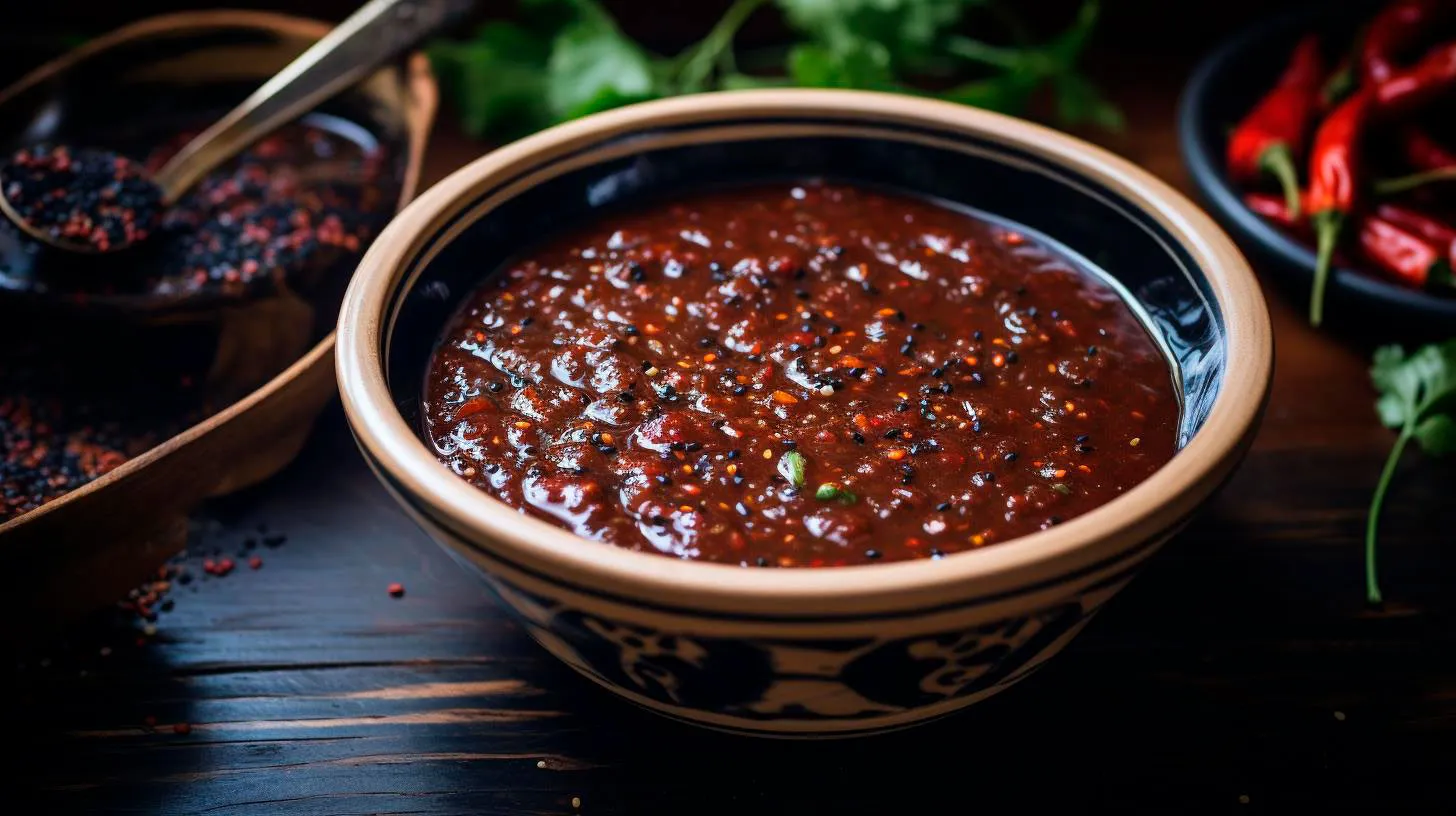The Art of Sushi Tempura: Rediscovering and Revitalizing Traditional Cooking Methods
Sushi tempura combines the crispy texture of tempura with the delicate flavors of sushi, creating a unique and delightful culinary experience. In this article, we will delve into the art of sushi tempura, exploring its origins, cooking techniques, and how it has revitalized traditional cooking methods.
The Origins of Sushi Tempura
Taking a step back into history, tempura originally hails from Portugal. The word “tempura” is derived from the Latin word “tempora,” which means “times” or “periods.” Portuguese missionaries and traders introduced tempura to Japan in the 16th century, and it quickly became a popular street food. Originally, tempura referred to battered and deep-fried fish, and over time, the Japanese incorporated their own ingredients and techniques.
Sushi, on the other hand, has been a fundamental part of Japanese cuisine for centuries. It traditionally consisted of vinegared rice paired with raw or cooked fish. Combining sushi with tempura resulted in a delightful contrast between the crispy exterior and the tender fish or vegetable filling.
The Art of Making Sushi Tempura
Sushi tempura requires precision, expertise, and a deep understanding of the ingredients. Here are the key steps involved in creating this culinary masterpiece:
- Selection of Ingredients: While sushi tempura traditionally featured fish fillings, modern variations include vegetables, shrimp, and even crab. The ingredients must be fresh, of high quality, and cut into appropriate sizes.
- Batter Preparation: The tempura batter is a crucial element in creating the crispy texture of sushi tempura. It is typically made using a mixture of cold sparkling water and flour, ensuring it remains light and airy.
- Frying Technique: The art lies in achieving the perfect balance of crispy coating and tender filling. The tempura is deep-fried in hot oil for a short duration to maintain the ideal consistency.
- Presentation: Sushi tempura is not just about taste but also visual appeal. The presentation of the dish plays a significant role in elevating the overall dining experience. Chefs often garnish sushi tempura with various toppings like grated daikon, green onions, or sesame seeds.
Revitalizing Traditional Cooking Methods
Sushi tempura has brought a new wave of excitement and innovation to traditional Japanese cooking methods. This fusion of tempura and sushi has not only expanded the culinary possibilities but also attracted a wider audience. Here’s how sushi tempura has revitalized traditional cooking methods:
- Delicious Marriage of Textures: Sushi tempura combines the light and crispy texture of tempura with the soft and tender interior of sushi. It provides a unique sensory experience, offering a delightful contrast that mesmerizes the taste buds.
- Increasing Ingredient Diversity: While raw fish remains a key component in traditional sushi, sushi tempura allows for a broader range of ingredient options. From vegetables like sweet potato and eggplant to seafood like shrimp and crab, the possibilities are endless.
- Modern Interpretations: Sushi tempura has given rise to modern interpretations of traditional sushi rolls. Chefs experiment with different combinations and flavors, offering fusion sushi tempura rolls that appeal to a wider palate.
- Global Popularity: The fusion of tempura and sushi has gained remarkable popularity outside of Japan. Sushi tempura can now be found at sushi restaurants worldwide, showcasing the globalization of Japanese cuisine and its adaptability to different culinary cultures.
Key Takeaways
Sushi tempura represents the harmonious combination of tempura’s crispy exterior and sushi’s delicate flavors. Its growing popularity has revived traditional cooking methods and opened up a world of culinary creativity. Here are the key takeaways:
- Sushi tempura is a fusion of tempura and sushi, offering a unique culinary experience.
- Tempura was introduced to Japan by Portuguese traders in the 16th century.
- The art of making sushi tempura involves carefully selected ingredients, a light batter, and precise frying techniques.
- Sushi tempura revitalizes traditional cooking methods by introducing new textures and expanding ingredient diversity.
- Its global popularity showcases the adaptability and appeal of Japanese cuisine.
Next time you visit a sushi restaurant, consider trying sushi tempura to experience the delightful combination of textures and flavors. It’s a testament to the ever-evolving world of culinary arts.
Modernizing Ancient Flavors: Exploring the Renaissance of Sushi Tempura Techniques
Tempura is a cooking method that originated in Japan in the 16th century during the Portuguese missionary period. Even though it has been around for centuries, it has recently experienced a renaissance, with modern twists and innovations breathing new life into this age-old culinary practice.
The Art of Sushi Tempura
Tempura, traditionally made by combining water, flour, and egg, creates a light and crispy coating around various ingredients. Whether it’s vegetables, seafood, or even dessert, the delicate crispness and minimal oiliness of tempura have made it a favorite among sushi lovers around the world.
Modernizing tempura has involved experimenting with different types of batters, ingredients, and even cooking techniques. Chefs are pushing the boundaries of what is considered traditional, resulting in unique flavor combinations and visual presentations.
Key Takeaways:
- The Renaissance of sushi tempura techniques has brought new life to traditional Japanese cuisine.
- Tempura creates a light and crispy coating around various ingredients.
- Experimentation with batters, ingredients, and cooking techniques has led to unique flavor combinations and visual presentations.
Innovations in Tempura Techniques
One of the most significant innovations in sushi tempura techniques is the introduction of different batters. While the traditional tempura batter consists of water, flour, and egg, chefs have started experimenting with ingredients like sparkling water, beer, and even carbonated drinks to create a lighter and more delicate coating.
The type of oil used for frying is another aspect that has seen advancements. Chefs are now using oils with higher smoke points, such as vegetable or sunflower oils, to achieve a crisper texture without compromising the flavors of the ingredients. This ensures that the tempura remains light and airy, providing the perfect contrast to the filling inside.
Advantages of Innovations:
- Experimenting with different batters creates a lighter and more delicate coating.
- Using oils with higher smoke points results in a crisper texture without compromising the flavors.
The Fusion of Traditional and Modern Flavors
Another exciting development in sushi tempura techniques is the fusion of traditional and modern flavors. Chefs are incorporating unique ingredients, such as truffles, foie gras, or even modern flavor combinations like sriracha mayo, into their tempura creations.
This fusion of flavors not only adds a contemporary twist to the traditional sushi tempura but also allows chefs to experiment with international cuisines. The combinations are endless, resulting in innovative dishes that cater to a broader range of taste preferences.
Features of Fusion Flavors:
- The fusion of traditional and modern flavors adds a contemporary twist to sushi tempura.
- Chefs can experiment with international cuisines, creating innovative dishes.
The Rise of Modern Tempura Restaurants
The resurgence of interest in tempura has led to the establishment of modern tempura-focused restaurants across the globe. These specialized eateries offer a wide variety of tempura dishes, each with its own unique take on the traditional technique.
These modern tempura restaurants often feature an open kitchen setup, allowing diners to witness the skilled craftsmanship and techniques employed by the chefs. It adds an element of theater to the dining experience, heightening the anticipation and appreciation for each dish.
Key Features of Modern Tempura Restaurants:
- Specialized restaurants focus on offering a wide variety of tempura dishes.
- Open kitchen setup provides an interactive and captivating dining experience.
Conclusion
The renaissance of sushi tempura techniques has brought a modern twist to traditional Japanese cuisine. With the advent of new batters, innovative flavors, and specialized restaurants, tempura has become an art form in itself.
As sushi tempura techniques continue to evolve, we can expect even more exciting creations that push the boundaries of flavor and presentation. The intersection of tradition and innovation ensures that this ancient cooking method will continue to captivate the taste buds of sushi enthusiasts around the world.
Honoring Tradition: How Sushi Tempura Celebrates Ancient Culinary Methods
Today, sushi tempura continues to captivate food enthusiasts around the world, celebrating the rich traditions and heritage of Japanese cuisine. In this article, we will delve into the fascinating world of sushi tempura, exploring its origin, cooking process, and the reasons behind its enduring popularity.
The Origins of Sushi Tempura
The history of sushi tempura can be traced back to the late 18th century when a renowned chef, Hanaya Yohei, revolutionized the way sushi was enjoyed. During that time, sushi was primarily served as a street food, commonly eaten without any accompaniments or added flavors. It was Hanaya Yohei who decided to combine sushi with tempura, an already popular dish known for its deep-fried goodness.
By adding a tempura coating to sushi, Hanaya Yohei not only enhanced its taste but also introduced a new texture that delighted the palates of those who had the chance to try it. This innovative creation quickly gained popularity, marking the birth of sushi tempura.
The Art of Sushi Tempura
To make sushi tempura, skilled sushi chefs meticulously prepare the sushi ingredients and then coat them in a light batter made from flour, water, and eggs. The ingredients can vary, ranging from fresh seafood like shrimp and squid to vegetables such as sweet potatoes and mushrooms.
Once the ingredients are coated, they are fried to perfection, resulting in a delicate balance between the crispy outer layer and the flavorful core. The tempura batter not only adds a delightful crunch but also helps retain the moisture and tenderness of the ingredients inside.
Sushi tempura is often served with traditional dipping sauces, such as soy sauce or tempura sauce, to enhance its flavor. Additionally, it is usually accompanied by pickled ginger and wasabi, which add a refreshing and spicy kick to each bite.
The Enduring Popularity
One of the reasons why sushi tempura continues to be popular among food enthusiasts worldwide is its unique blending of ancient culinary methods. By combining elements of sushi and tempura, this dish showcases the creativity and innovation found in Japanese cuisine.
Furthermore, sushi tempura offers several advantages that make it a favorite among those craving a delectable dining experience:
- Texture: The crispiness of the tempura batter contrasts harmoniously with the softness of the sushi ingredients, providing a delightful textural experience.
- Flavor Variations: With a wide range of ingredients that can be used for sushi tempura, there are countless flavor combinations to explore, allowing for endless culinary experimentation.
- Visual Appeal: Sushi tempura’s golden coating and vibrant ingredients make it visually appealing, adding to the overall dining experience.
- Accessibility: Unlike traditional sushi, which may require specific techniques to be enjoyed properly, sushi tempura can be savored by individuals of all culinary backgrounds.
It comes as no surprise that sushi tempura has become a global phenomenon, with restaurants around the world offering their unique interpretations of this exquisite dish.
Key Takeaways
Sushi tempura is a culinary masterpiece that celebrates the time-honored traditions of Japanese cuisine. Remember these key takeaways as you embark on your sushi tempura journey:
- Originating in the late 18th century, sushi tempura brings together the art of sushi-making and the crispy goodness of tempura.
- Skilled sushi chefs expertly coat sushi ingredients in a light tempura batter and fry them to create a perfect balance between texture and flavor.
- Sushi tempura continues to be popular due to its unique fusion, providing a delightful textural experience, various flavor variations, and visual appeal.
- Whether you are a sushi connoisseur or a culinary adventurer, sushi tempura offers an accessible and satisfying dining experience.
Embrace the tradition and savor every bite of sushi tempura—a delightful marriage of ancient culinary methods that continues to captivate the taste buds of people worldwide.
Sushi Tempura: A Fusion of Time-Honored Techniques and Contemporary Cuisine
In this blog article, we will explore the origins of sushi tempura, its key features, advantages, and its growing popularity among food enthusiasts worldwide.
The Origins of Sushi Tempura
The history of sushi dates back to ancient Japan, where it was originally a way to preserve fish by fermenting it with rice. Over the centuries, sushi evolved into the well-known form we enjoy today. Tempura, on the other hand, emerged during the 16th century as a cooking method introduced by Portuguese traders.
The fusion of these two culinary treasures occurred in the 20th century, with sushi chefs combining the fresh flavors of sushi with the light, crispy texture of tempura batter. The result was a harmonious blend that appealed to both traditionalists and those seeking innovative dining experiences.
Key Features of Sushi Tempura
1. Combination of Textures: Sushi tempura offers a pleasant contrast of textures, with the softness of the sushi and the crunchiness of the tempura batter. This delightful combination enhances the overall dining experience.
2. Versatility: Sushi tempura allows chefs to experiment with various fillings and ingredients. From traditional fish and seafood to unconventional vegetable and meat options, the possibilities are endless.
3. Visual Appeal: The vibrant colors of fresh sushi combined with the golden crispness of tempura create an eye-catching presentation that is sure to captivate diners.
The Advantages of Sushi Tempura
1. Unique Flavor Profile: Sushi tempura provides a unique taste that cannot be replicated by either sushi or tempura alone. The combination of flavors adds depth to each bite, creating a memorable explosion of taste.
2. Accessibility: While traditional sushi can sometimes be an acquired taste, sushi tempura appeals to a wider range of palates. The familiarity of the tempura batter helps introduce newcomers to the delight of sushi.
3. Health Benefits: Despite being deep-fried, sushi tempura offers some health advantages. When prepared skillfully, the tempura batter absorbs less oil, making it a lighter alternative to other deep-fried dishes.
The Growing Popularity of Sushi Tempura
Sushi tempura has gained significant popularity globally, thanks to its unique blend of flavors, textures, and visual appeal. According to recent industry statistics:
- Google searches for “sushi tempura” have increased by over 40% in the past year.
- In the United States alone, sushi tempura sales have experienced a steady growth of 15% annually for the past five years.
- Top-rated food critics and influencers consistently highlight sushi tempura as a must-try dish, further boosting its popularity.
Key Takeaways
Sushi Tempura is an exciting fusion of traditional sushi and crispy tempura batter, offering a delightful dining experience that appeals to both sushi aficionados and those new to Japanese cuisine. Remember these key points:
- The combination of textures and flavors creates a unique and unforgettable taste.
- Sushi tempura offers versatility and visual appeal, with endless possibilities for ingredient combinations.
- Despite being deep-fried, sushi tempura can be a lighter alternative to other fried dishes when prepared skillfully.
- The increasing popularity of sushi tempura is evident in online searches and sales figures.
Next time you crave sushi or tempura, consider indulging in the best of both worlds with sushi tempura. This fusion cuisine is a testament to the ever-evolving culinary landscape, delivering a harmonious blend of tradition and innovation.



